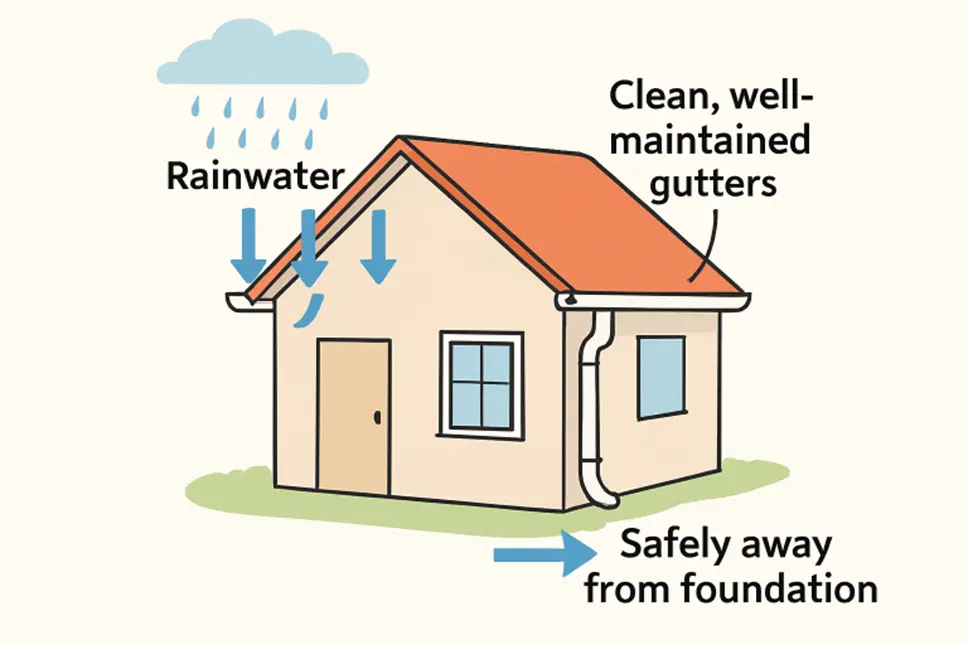Introduction
Water damage seriously threatens homeowners, often resulting in expensive repairs, hazardous mold growth, and long-term property devaluation. Fortunately, by taking proactive steps and being vigilant, you can significantly reduce the likelihood of water intrusion. Working with a reputable roofing company can also be crucial for regular inspections and quick repairs, helping protect your property and preserve its value.
Every part of your home—from the roof to the basement—requires attention to prevent leaks, flooding, and moisture buildup. The most effective defenses against water damage involve consistent maintenance and preparedness. Addressing potential weak spots and knowing how to respond to emergencies are fundamental steps for homeowners.
Investing time and resources into regular upkeep is a smart way to avoid unpleasant surprises. Minor issues can escalate if not detected early, so taking action now can save money and peace of mind in the long run.
Simple preventative measures, such as upgrading gutter systems or ensuring a tight weather seal around windows, are easy to implement and can significantly improve your home’s longevity. According to the Insurance Information Institute, water damage is among the most common and costly types of home insurance claims, so prevention is particularly prudent.
Regular Roof Inspections
Your roof is the first line of defense against water infiltration. Thorough roof inspections twice a year, especially after severe storms, help identify cracked, missing, or curling shingles before they become a larger problem. Early detection and repair prevent leaks that can compromise structural integrity and lead to costly interior damage. Scheduling professional roof assessments ensures that less visible issues, such as blocked vents or damaged flashing, are not overlooked.
Gutter Maintenance
Gutters are vital for channeling water away from your home’s foundation. When leaves and debris pile up, water can spill over the sides, pooling at the foundation and increasing the risk of basement leaks or structural deterioration. Clean your gutters at least twice yearly, in spring and fall, and consider installing gutter guards to minimize buildup. Regular downspout inspections and ensuring proper extension direct water safely away from your home.
Sealing Windows and Doors
Unsealed openings can become vulnerable entry points for moisture. Check the caulking around your windows and doors annually, particularly before the rainy season. If you notice cracking, gaps, or rotted wood, remove the old material and replace it with high-quality, waterproof caulk or fresh weather stripping. This not only blocks out rainwater but also improves energy efficiency.
Plumbing System Checks
Even small leaks in pipes, faucets, or fixtures can rapidly escalate into significant water damage. Regularly inspect plumbing under sinks, behind toilets, and near water heaters for any signs of dripping, corrosion, or pooling moisture. Pay close attention to your water bill; a sudden spike could signal a hidden leak. Fixing minor leaks right away prevents mold growth and flooding disasters. For guidance on identifying and addressing common plumbing issues, visit Family Handyman.
Installing Water Detection Devices
Early warning is essential for minimizing water damage. Water detection sensors and alarms, which can be placed near high-risk appliances such as water heaters, washing machines, and dishwashers, provide real-time alerts if moisture is detected. These smart devices are affordable, easy to install, and can even be monitored remotely via mobile apps, offering peace of mind when you’re away from home.
Landscaping and Drainage
Poor drainage is a leading cause of foundation and basement water issues. Ensure your yard slopes away from the house, and consider French drains or dry wells if your property has persistent pooling. Keep landscaping beds and mulch levels several inches below siding to prevent water from wicking into walls. Strategically placed downspout extensions and swales also help carry runoff farther from your home.
Appliance Maintenance
Appliances that use water are potential sources of leaks. Inspect washing machine hoses, refrigerator water lines, and dishwasher connections for kinks, cracks, or bulges. Upgrade to steel-braided hoses, which are more durable than rubber, and replace any component older than five years as a precaution. A proactive maintenance schedule ensures longevity and reduces the risk of catastrophic leaks.
Emergency Preparedness
No system is foolproof, making emergency readiness critical. Every household should know the location of the main water shut-off valve and practice shutting off the water supply quickly in case of sudden leaks. Keep essential tools, such as a wrench and plumber’s tape, accessible. Prepare an action plan with crucial phone numbers and recommended repair professionals. Fast action can dramatically reduce potential damage and repair costs, as reinforced by the American Red Cross.
By staying proactive and informed, homeowners can significantly reduce the risk of water damage. Each strategy, from diligent inspections to emergency planning, ensures a safe, dry, and healthy home environment.
Also read



